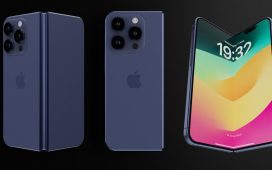
Oliver Cragg / Android Authority
TL;DR
- Japanese Nintendo Switch port developers revealed how the Nintendo Switch’s underpowered hardware hampered development.
- Everything from the weak CPU to the paltry 4GB of RAM was an impediment compared to its competitors.
- The number one thing developers want from the Switch 2 is “improved overall hardware specs.”
It’s common knowledge that the Nintendo Switch was underpowered when it was released in 2017, but now we know exactly what that meant for developers. Automaton Media interviewed a group of Japanese developers of Nintendo Switch ports about their experience with the platform, revealing just how limiting the hardware was.
For starters, the CPU was constantly at full capacity, meaning that background loading was nearly impossible. Typically, this would allow the console to pre-load the next scene before it starts, smoothing out transitions and reducing load times. On the Nintendo Switch, most developers simply accepted that load times would be significantly longer than on other platforms.
Graphics were another area where developers had to make serious concessions. Whereas target resolutions for the Xbox Series X and PlayStation 5 are between WQHD (1440p) and 4K, Switch games were lucky to hit 720p in docked mode or 540p in handheld mode. That’s significantly less than the native HD resolution of the screen, and less than what you’d expect on the Xbox One and PlayStation 4.
Speaking of the Xbox One and PS4, those consoles shipped with 8GB of RAM, double the Nintendo Switch’s 4GB. That presented a serious problem, since exceeding that amount would cause games to crash. That forced developers to “compress textures to the absolute limit to save memory” and make games playable.

Even the game cartridges were an issue, since the read speed was slower than both the internal storage and microSD card slot. Those cartridges also top off at 32GB, so larger games often require users to download additional data to internal storage or a microSD card. Publishers were also incentivized to use smaller capacity cartridges, since they are cheaper to produce and increase margins.
Other difficulties arose from the console’s name. “Switch” is a common term in programming, and when used in code, it can have some unintended consequences.
Developer expectations for the Switch 2 were clear: more powerful hardware.
Granted, most of these problems were related to porting games developed for other platforms to the Nintendo Switch. Games developed specifically for the Switch didn’t struggle as much with the underpowered hardware since they could be designed around it. The rise of Unity, Unreal Engine, and other modern game engines also helped streamline porting efforts.
Much like gamers themselves, the developers want “improved overall hardware specs ” from the Switch 2. The gap between the Series X/PS5 and the Nintendo Switch is starting to make new ports untenable, and that’s only going to get worse as time goes on. Even so, the developers remain committed to the platform, which is a testament to just how successful and influential the Nintendo Switch has been.











